In total, there are about 100 different dishes made mainly from rice flour, wheat flour... and various meat and seafood fillings steamed in bamboo steamers, but most importantly, they must be eaten with tea.
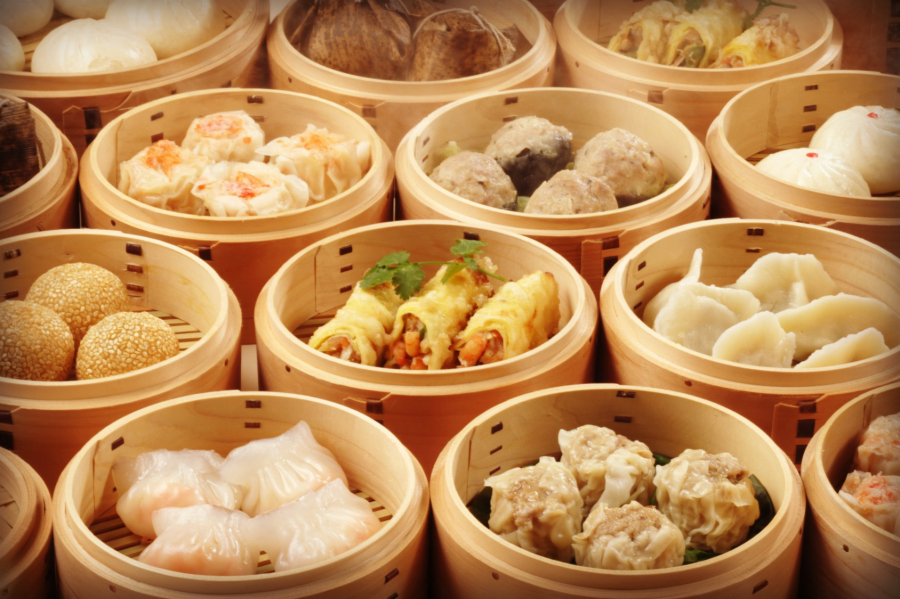
Steamed dishes include wontons, dumplings, steamed buns, steamed buns, meatballs, char siu buns, chive buns, and fried dishes such as: crispy taro cakes, fried salmon dumplings, spring rolls, cakes, meatballs, steamed chicken feet, and congee.
The development of dim sum, becoming a culinary beauty as it is today, cannot be without the contribution of the Cantonese people. Cantonese dim sum dishes are more special and sophisticated than those of other provinces in China. They look attractive, delicious, and have a light flavor because they do not use too many spices. Not only changing the monotonous filling, the Cantonese people also bring the art of shaping and decorating dishes, giving dim sum a completely new look. For example, dim sum dishes in the North of China are mainly made of wheat flour, but in Guangdong people use rice flour or local vegetables to make dim sum.

Cantonese-style dim sum is more distinctive and elaborate than that of other provinces in China.
But no matter how many different variations they may have, Cantonese dim sum dishes all come from rustic origins, such as Mandarin Porridge.
"Once upon a time, there was a student who went to school to take an exam. When he returned home, he was hungry, but when he went into the kitchen, he found nothing left to eat. There was only a little white porridge and a few leftovers, including a few roasted peanuts. So he poured everything into a bowl of porridge to eat to ease his hunger. When the exam results came out, he passed the imperial examination. People rumored that thanks to eating that mixed porridge, he passed the exam with high scores, so from then on, they called it imperial porridge, a very popular breakfast dish that still exists today."
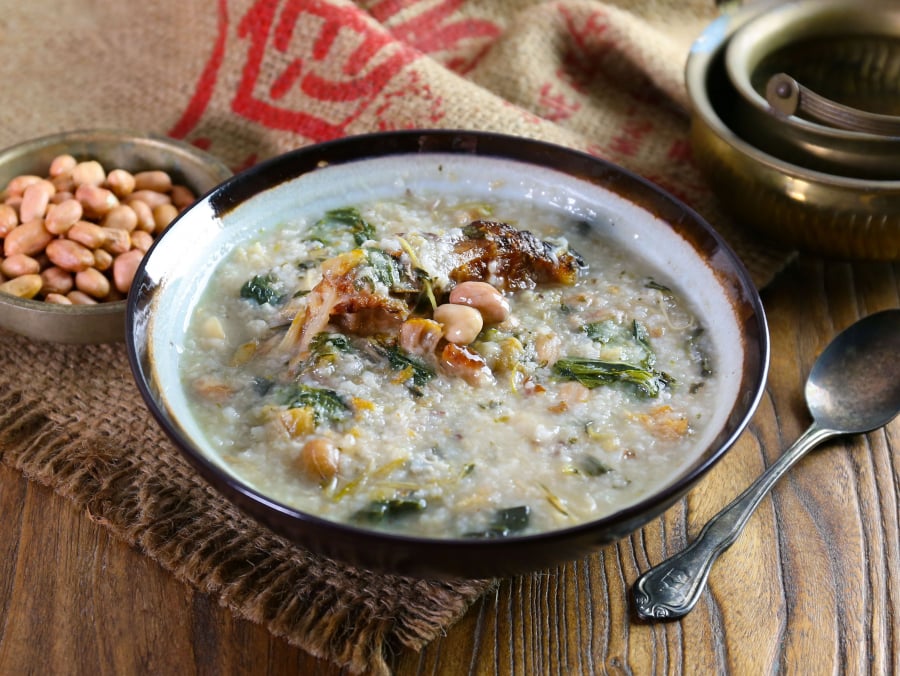
Cantonese Poinsettia Porridge.
A unique point of breakfast is that you can eat many dishes without feeling full, and you can snack and eat without getting bored thanks to tea.
Cantonese families have a habit of meeting at restaurants to eat dim sum and chat over a cup of tea. Most restaurants here sell these rich dim sum dishes. Eating dim sum and drinking tea is an indispensable part of life, especially for the elderly. They consider it a pastime, a way to spend time, "The elderly can meet together to drink tea and read newspapers all morning, or all afternoon." In Cantonese, there is a saying1 cup of tea and 2 snacks, enough for an elderly person to get through a day.

Nowadays, restaurants not only serve breakfast but also serve all day; various dim sum items are even sold as take-away for students and office workers.
A traditional dim sum meal includes various types of dumplings such as xoa thieu bao, rice or wheat dumplings and rice noodles, containing a variety of ingredients, including beef, chicken, pork, shrimp and vegetarian options. Many dim sum restaurants also offer steamed green vegetable platters, grilled meats, congee and other soups. Desserts are also available and many places include egg tarts. Dim sum is often eaten as breakfast or brunch.
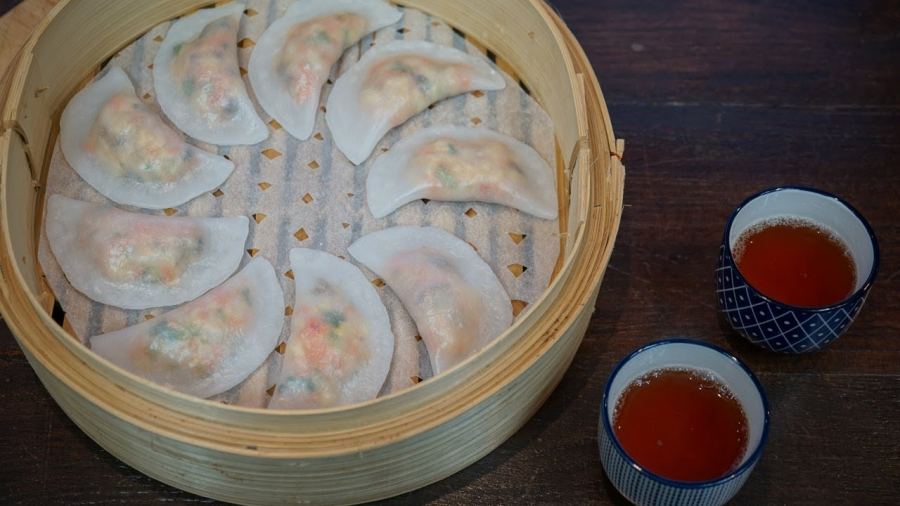
Dumplings have a translucent skin revealing a beautiful pink shrimp and meat filling with a bit of green onion and an attractive aroma.
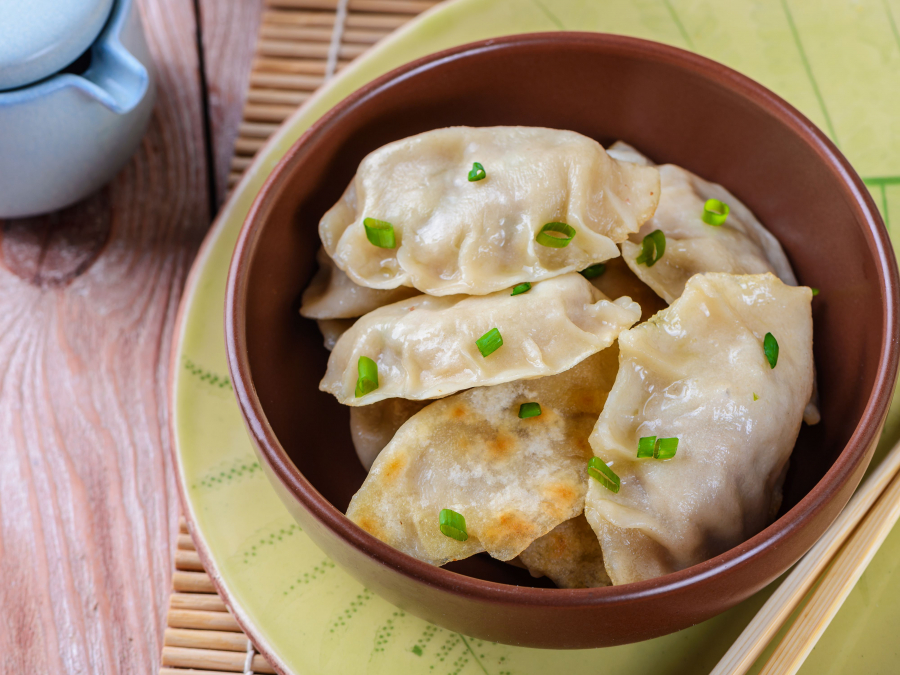
Dumplings typically consist of minced meat or vegetables filled and rolled in a thin piece of dough, which is then pressed together by pressing the corners together or pleating.

Meatballs usually include pork, black mushrooms, onions, ginger... wrapped in wonton paper.
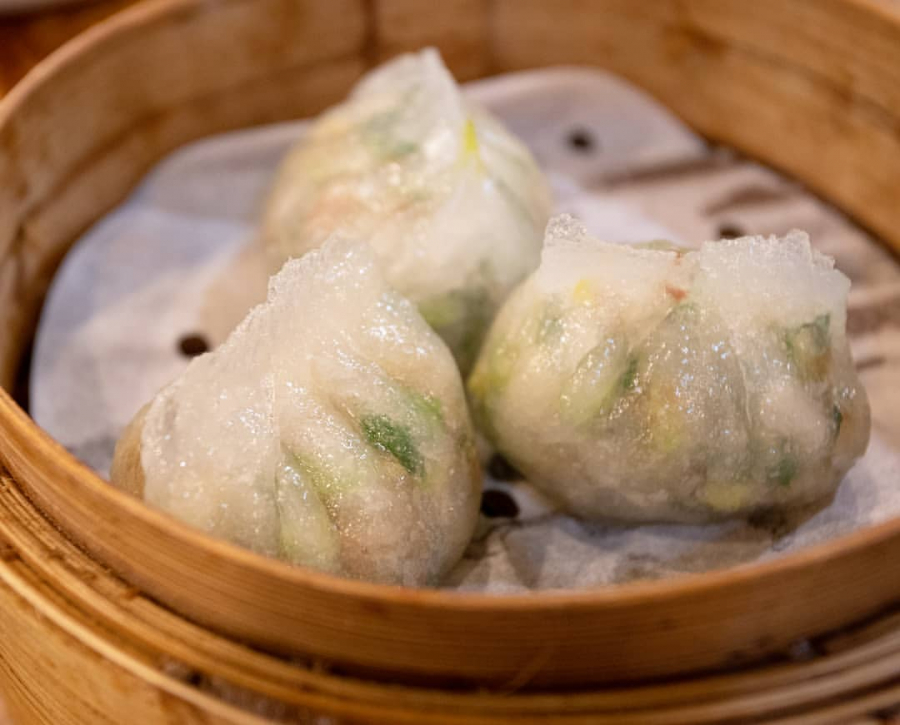
Steamed Teochew dumplings with peanuts, garlic, chives, pork, dried shrimp and Chinese mushrooms.

Xiao long bao are dumplings filled with meat or seafood in a rich broth.
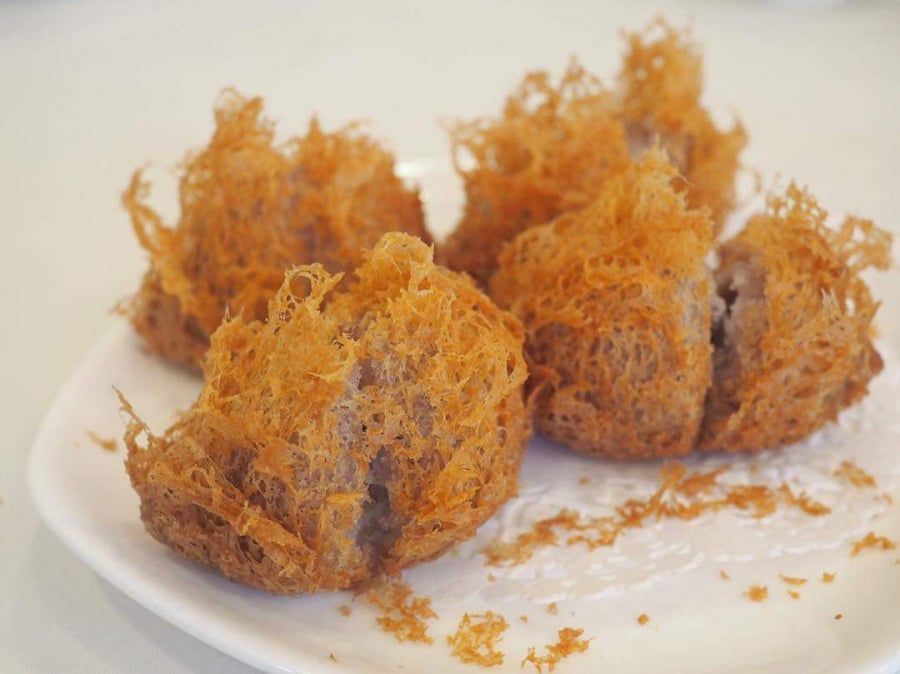
Crispy fried dumplings made with mashed taro, stuffed with diced mushrooms, shrimp and pork.
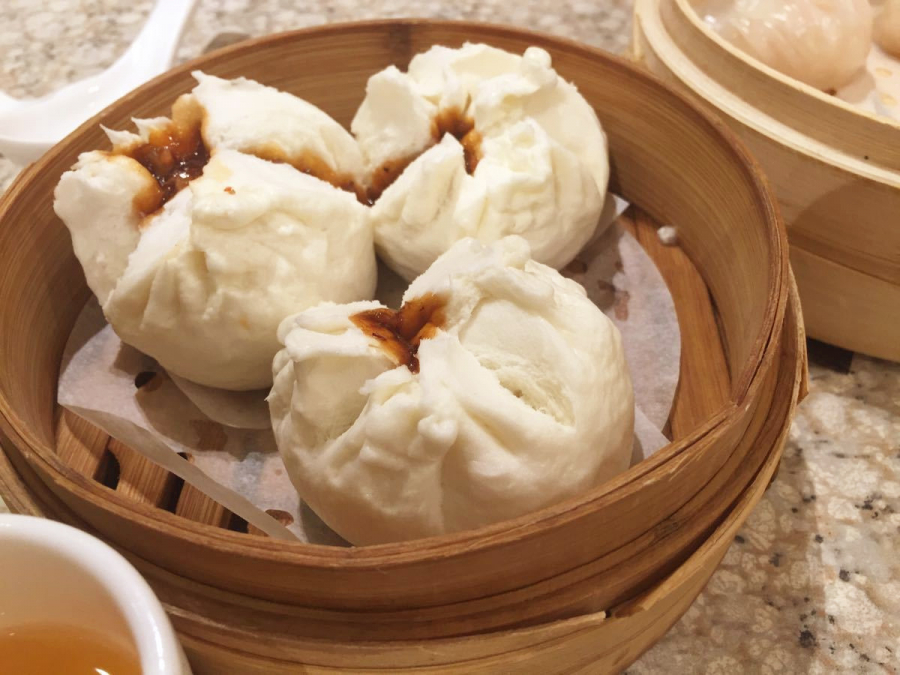
Xoa thieu bao are steamed pork dumplings. They can be steamed to be white and fluffy or glazed and baked to a golden brown.
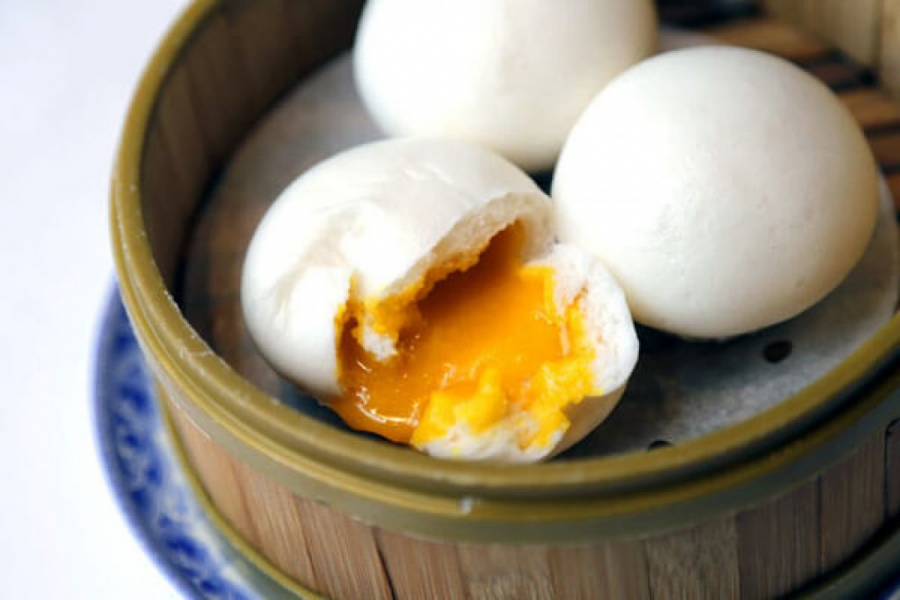
Gold leaf steamed buns (nai hoang bao) are steamed buns with custard filling.
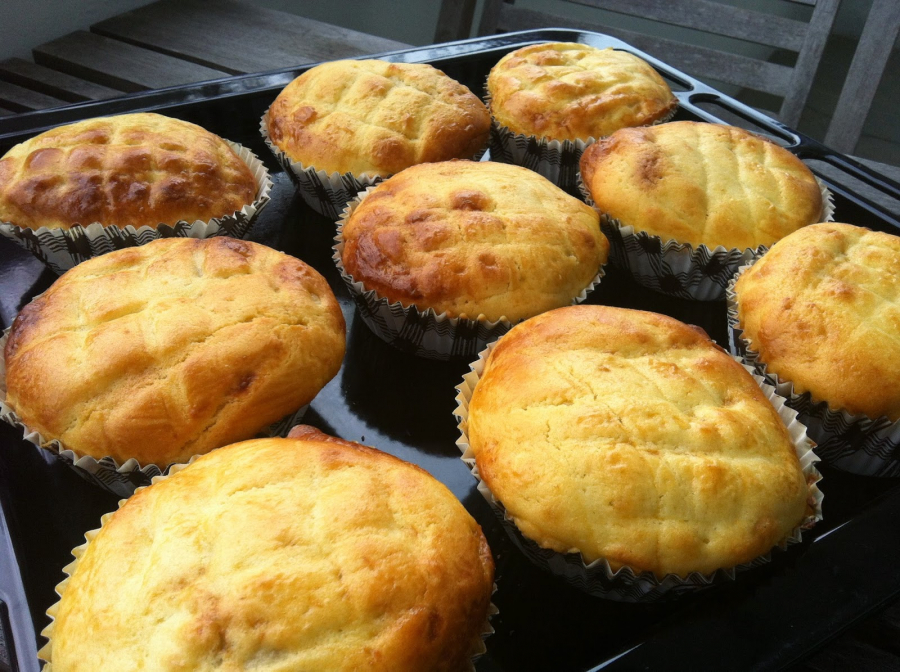
Pineapple buns are bread rolls with a pineapple-like textured topping, usually sweet and containing no pineapple.
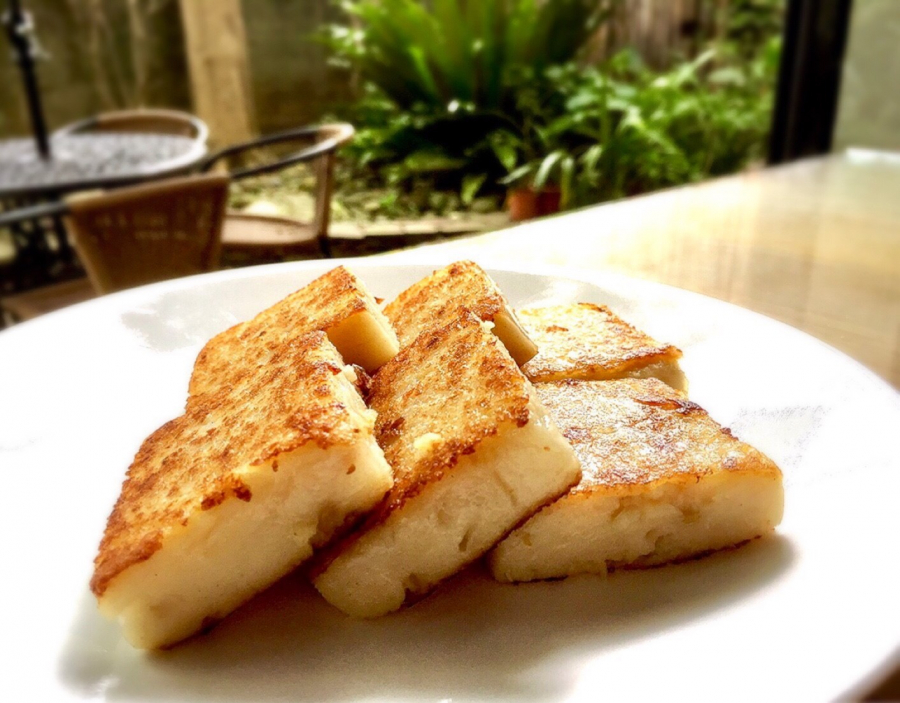
Radish cakes are a pudding made from shredded white radish mixed with dried shrimp pieces, Chinese sausages and mushrooms. They are steamed, then sliced and pan-fried.
Dim sum can be prepared by steaming and frying, among other methods. Dishes are often served in small steamers, each containing three or four pieces. It is an ancient Chinese custom that when people sit at the same table to share dishes, everyone gets to try a bite of each dish.


















.jpg.jpg)



.jpg_4.jpg.jpg)



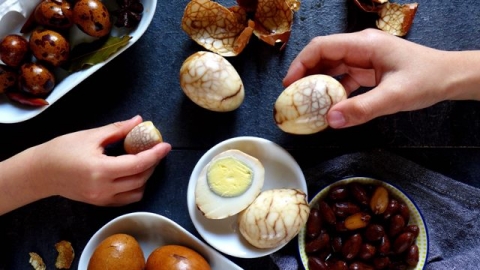
.jpg_4.jpg.jpg)






